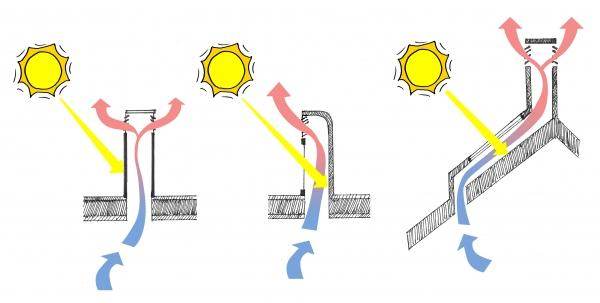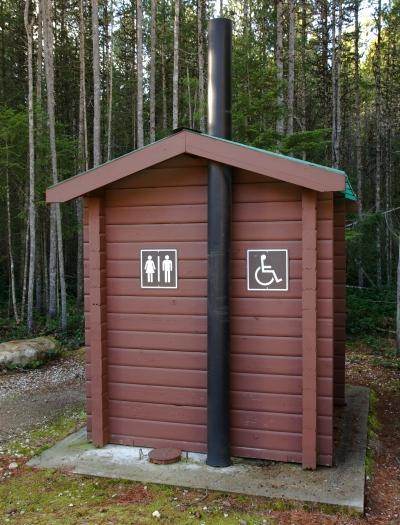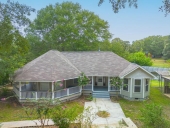With a little bit of management and possibly some ducting and a fan your RMH could be used for cooling in the summer. In many locales summer days are hot but the nights are much cooler. Of course any sensible person in this environment will ventilate heavily during summer nights.
I once lived in a house with a large stone fireplace and chimney running up the center. The draft was open completely on summer nights and the natural chimney effect sucked hot air from the house as cool evening air flowed in to replace it. During the day the baffle was closed and stone which had been cooled by the night air became a large heat sink with cooled air currents constantly flowing toward the floor. In the heat of late afternoon this fireplace was by far the coolest surface in the house since this building was otherwise lacking adequate thermal mass.
The horizontally built RMH will not have the same natural draft as a vertical fireplace but this draft can be created. An insulated chimney could be installed adjacent to the RMH exhaust and the two could be joined during the cooling season. The top few feet of this vertical pipe could be of uninsulated pipe painted black. This would allow for a stronger chimney effect in the early morning when outside temperatures are still quite low. Cold air could also be ducted into the feed door and fan driven. By ducting air to the feed door the incoming air can be selected from the coldest part of the natural environment whether that be the north side of the house, air from just above the pond or from earth tubes. Ducting the air to the feed door would also prevent the house from becoming uncomfortably cold during thermal mass cooling as sometimes happens in desert and mountain environments. My girls have often complained bitterly when my night ventilation has brought the temperature down to a frigid

68°F. The fact that they are being protected from the 90° heat of the next day has no bearing at all on their attitude towards my activities

. Ducting to the feed door would alleviate this problem.
Many people live in areas where summer nights are hot and muggy and where it feels like there is no relief in sight from the oppressive heat. I lived in such a place in Ontario. Hot summer nights were accompanied by zero wind speed so that opening the windows did almost nothing. But because we also had cold winters, ponds on the north side of buildings which were shaded by trees would reach peak summer temperatures in the mid-60s Fahrenheit. This cold water could be used within the radiator system for air conditioning purposes or air piped through water could be brought to the feed door of your RMH and to the rest of the house.
When done properly all of this night ventilation can make the home too cold in the early morning for the more timid inhabitants. An insulating blanket covering your now frigid RMH could save this stored cooling potential until late afternoon when everybody returns from school and work. Now these same complaining ninnies can enjoy laying on the cool cob with their hands and feet pressed against it for maximum effect

Let's discuss this to see what other steps can be taken to turn your RMH into an air conditioner.

 1
1




 68°F. The fact that they are being protected from the 90° heat of the next day has no bearing at all on their attitude towards my activities
68°F. The fact that they are being protected from the 90° heat of the next day has no bearing at all on their attitude towards my activities  . Ducting to the feed door would alleviate this problem.
. Ducting to the feed door would alleviate this problem.













































































 1
1



















